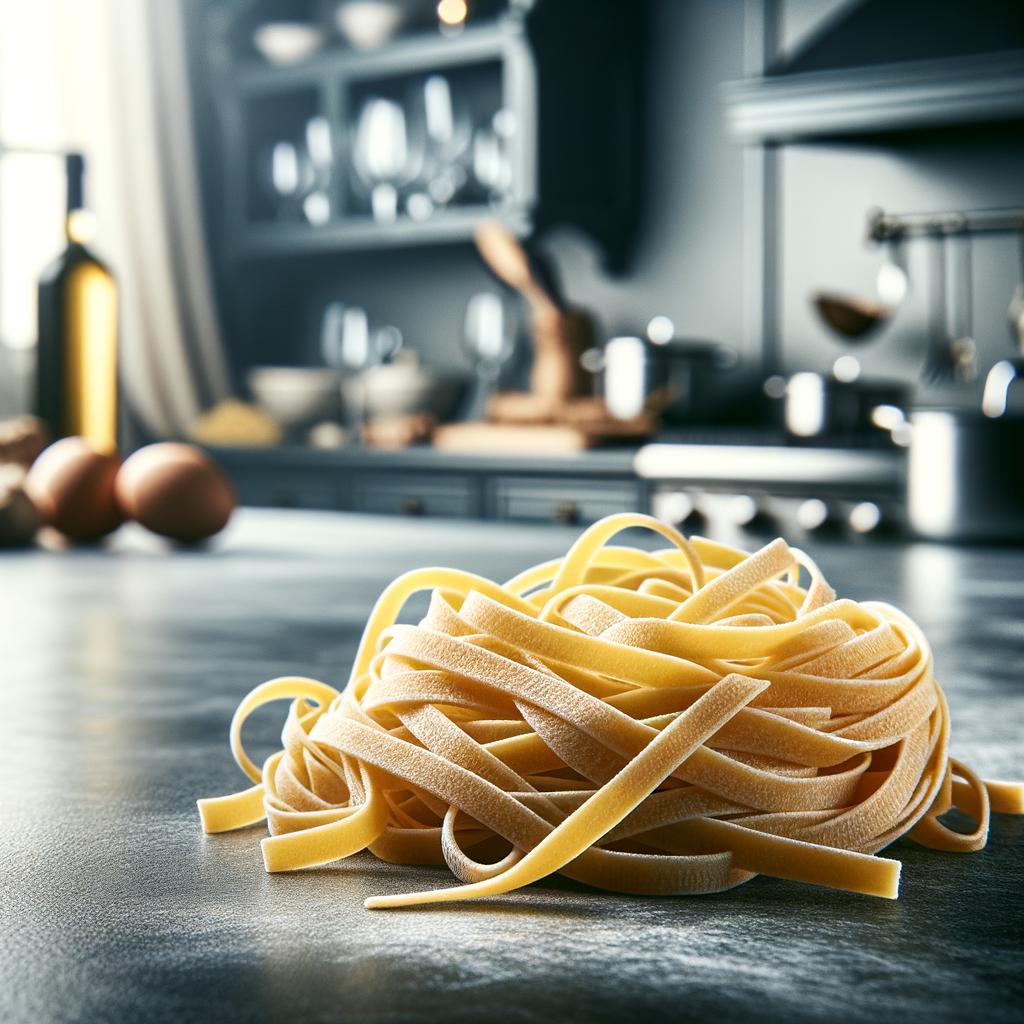Fresh Tagliatelle Pasta

Description
Tagliatelle, a beloved ingredient in the culinary world, is a type of pasta that hails from the Emilia-Romagna and Marche regions of Italy. These long, flat ribbons of pasta are similar to fettuccine and are traditionally made from a blend of egg and flour. The pasta's surface is smooth and slightly porous, perfect for clinging onto sauces. In terms of flavor, tagliatelle has a delicate and slightly eggy taste that pairs well with a multitude of sauces and ingredients. Its unique characteristic lies in its width, which is traditionally measured by the breadth of the tagliarolo, a chef's knife used in Bologna, thus setting it apart from other pasta varieties.
Primary Uses
Tagliatelle is a versatile ingredient that shines in a variety of dishes across numerous cuisines, particularly Italian. It is commonly served with hearty meat sauces like Bolognese, creamy sauces, or simple butter and sage preparations. Its thick and sturdy texture holds up well to robust, flavorful sauces. In Emilia-Romagna, tagliatelle al ragù is a classic dish that showcases this pasta's ability to carry rich, meaty flavors. Beyond the culinary world, tagliatelle also holds cultural significance in Italy, symbolizing the celebration of good food and togetherness.
History
The history of tagliatelle is as rich and layered as the pasta itself. Legend has it that tagliatelle was first created in 1487 by a talented cook who was inspired by the beautiful tresses of Lucrezia Borgia, on the occasion of her marriage to the Duke of Ferrara. Over time, tagliatelle has become a staple in Italian cuisine, its popularity spreading from the lavish courts of Renaissance Italy to the humble kitchens of modern homes worldwide. This pasta's story is not just about food, but also about art, love, and tradition.
Nutritional Information
Tagliatelle, like most fresh pastas, offers a good source of carbohydrates, the body's main source of energy. It also contains protein, thanks to the eggs in the pasta dough. While tagliatelle is not a significant source of vitamins or minerals, it can contribute to a balanced diet when paired with nutrient-rich sauces and ingredients. Compared to whole grain pasta, tagliatelle has a higher glycemic index, meaning it can raise blood sugar levels more quickly. However, when enjoyed in moderation and paired with high-fiber vegetables or lean proteins, tagliatelle can be part of a healthy meal. Its rich flavor and satisfying texture make it a worthwhile indulgence.

